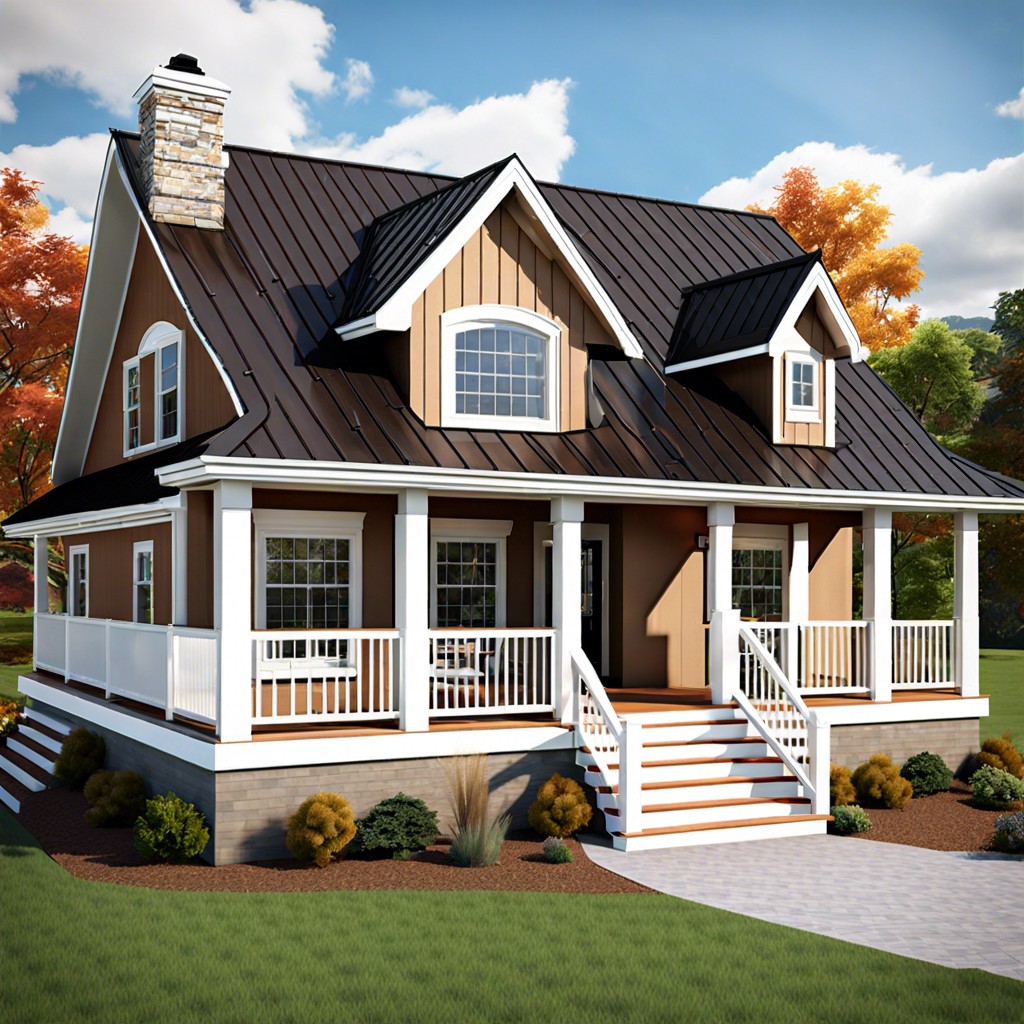Last updated on
Discover the average cost of a new roof and what factors may influence the price in this straightforward guide.
Key takeaways:
- Material choice influences cost (asphalt, metal, slate, clay).
- Roof size and complexity affect the price.
- Location impacts labor and materials costs (rural vs urban, weather conditions).
- Labor costs vary based on complexity and experience.
- Seasonality can affect the price due to demand.
Major Cost Factors of a New Roof

Roofing costs can feel like deciphering an ancient riddle. Several key factors influence how much you’ll shell out.
Material choice is a biggie. Asphalt shingles are your basic burger and fries, affordable and reliable. Opt for metal, slate, or clay tiles, and you’ve just upgraded to steak and lobster – fancy, but pricey.
Size really does matter here. A vast mansion’s roof will cost more than a cute little cottage’s. More area means more materials and more labor.
Don’t forget location. Coastal areas might need special materials to withstand salty air, while snowy regions demand durability against heavy snow loads. Roofing costs can be as unpredictable as the weather!
Speaking of labor, the price tag includes the hard work of the roofing crew. High-quality contractors charge more but can save you headaches (and future leaks). A bargain crew might end up costing you more in repairs later – kinda like those suspiciously cheap sushi rolls.
Keep these factors in mind when budgeting for your rooftop adventure.
Roof Material
Roof materials significantly influence the overall cost. Asphalt shingles? They’re the budget-friendly option, often costing between $100 to $150 per square (a square covers 100 square feet). Metal roofing, though pricier at about $300 to $800 per square, offers durability and a modern look.
Love the idea of a rustic, classic home? Wood shingles or shakes might be your go-to, but get ready to spend around $400 to $700 per square. They’re beautiful but come with a heftier price tag.
For those with a penchant for opulence, slate or tile roofs are the crème de la crème. These luxurious choices can set you back by $600 to $1,500 per square, depending on the type and quality.
Remember, you get what you pay for – so weigh durability, aesthetics, and budget before making your choice.
Roof Size
Simply put, the bigger the roof, the bigger the bill. Roofers typically charge per square foot, so the larger your roof, the more you’ll shell out.
Size isn’t just about square footage; it also includes the complexity of the design. Got a roof that’s channeling its inner Picasso with multiple slopes, valleys, and angles? Congrats, you’re adding to the cost.
Even the pitch, or steepness, of the roof plays a role. A steeper roof may look dramatic, but it also demands more materials and labor. Got a flat roof? Expect a sigh of relief from your wallet.
Lastly, don’t forget about the waste factor. Extra materials are usually ordered to cover inevitable cuts and scraps, particularly for roofs with complex patterns. No one likes jigsaw puzzles that much.
Location
Where you live plays a major role in the cost of a new roof. Think of it as real estate prices but for your roof – location matters!
First, labor costs can vary widely from one region to another. Roofing pros in big cities? They might charge more because the cost of living is higher. Meanwhile, rural areas might have cheaper rates.
Second, weather conditions are crucial. If you live in a hurricane-prone area, your roof needs to be tougher and might cost more because it requires specialized materials and techniques.
Lastly, regulatory factors kick in. Some places have strict building codes that increase costs due to extra permits and inspections.
In short, where you hang your hat, or rather, your roof, makes a real difference in how much it will cost you!
Labor
When calculating the cost of a new roof, labor is a significant factor. Skilled roofers aren’t just slapping shingles for fun—they’re ensuring your home stays dry and cozy for years to come. Here are some considerations:
The complexity of the job plays a huge role. Steep roofs or those with multiple angles and intricate details need more time and expertise, making labor costs soar.
Region matters too. Roofers in urban areas or regions with a high cost of living tend to charge more due to higher demand and expenses.
Experience is also key. Seasoned professionals might charge a premium, but remember, you often get what you pay for.
Seasonality affects costs. Busy seasons like summer can lead to higher prices due to increased demand.
Understanding these factors helps you grasp why labor costs aren’t one-size-fits-all.





